The US Department of Commerce today announced the final anti-dumping duty rate of 20.56% in the sixth annual antidumping review of unfairly traded Canadian softwood lumber imports into the United States. The review covers lumber imported in calendar year 2023. If the Department’s forthcoming determination in the countervailing duty review is consistent with the preliminary results, the combined rate will be well over 30%.
Council of Forest Industries (COFI):
COFI strongly condemns today’s decision by the US Department of Commerce to once again increase anti-dumping duties on Canadian softwood lumber. These unjustified and punitive trade actions continue to harm workers, families, and communities across British Columbia and Canada—and have gone unresolved for far too long. We call on the Government of Canada to make resolution of the softwood lumber dispute a top national priority. But this latest escalation also underscores a hard truth: we cannot wait for the US to act. To keep forestry workers employed and communities strong, BC must urgently strengthen the conditions to succeed here at home. That starts with treating forestry as a major project to reach a target harvest of 45 million cubic metres and taking immediate action to restore wood flow, protect jobs, and stabilize the sector—while laying the groundwork for long-term competitiveness.
US Lumber Coalition:
The US Lumber Coalition applauds Trump Administration’s strong enforcement of the US trade Laws against egregious levels of unfair trade by Canada in softwood lumber. “20.56% – that is the enormous extent to which Canadian producers dumped their lumber in the US market. …Andrew Miller, Chairman of the Coalition said., “The Commerce Department has once again proven the severity of market disruption caused by Canada’s unfair trading. Time has come for Canada to reconcile the size of its industry with market realities. The United States will no longer absorb Canada’s massive excess capacity in lumber at the expense of US mills and communities.” …US lumber industry and workers letter to President Trump. Enforcing U.S. trade laws helps increase the U.S. supply of lumber to build American homes, all without impacting the cost of a new home, as demonstrated by data from the NAHB and Fastmarkets Random Lengths.
BC Lumber Trade Council (BCLTC):
The BCLTC is deeply disappointed by today’s final determination by the US Department of Commerce to raise anti-dumping duties on Canadian softwood lumber to 20.56%. This decision represents yet another example of ongoing US protectionism at a time when cross-border cooperation should be a shared priority. “These duties are both unjustified and harmful,” said Kurt Niquidet, President of the BC Lumber Trade Council. “They unfairly penalize forestry workers and families across British Columbia, while further increasing costs for American homebuilders and consumers. Niquidet emphasized the need for a lasting resolution: “Rather than prolonging this decades-old dispute through costly litigation, we urge both governments to pursue a fair and durable agreement that delivers long-term certainty in the softwood lumber trade.”
 The Forest Stewardship Council lifted its suspension of Asia Pulp & Paper in the interest of speedy redress—to Greenpeace’s dismay. In other Business news: Kruger plans a $700M modernization of its Corner Brook mill; Northern Pulp’s cleanup plan is still pending; Port Angeles demands a full cleanup of Rayonier mill site; UPM to curtail paper production due to overcapacity; Weyerhaeuser posts lower Q2, 2025 earnings; the US plans to continue investigating hardwood plywood imports; and the USDA draws criticism for relocating DC staff. Meanwhile: Ontario invests in forest biomass; and the Wood Flooring Association has a new CEO.
The Forest Stewardship Council lifted its suspension of Asia Pulp & Paper in the interest of speedy redress—to Greenpeace’s dismay. In other Business news: Kruger plans a $700M modernization of its Corner Brook mill; Northern Pulp’s cleanup plan is still pending; Port Angeles demands a full cleanup of Rayonier mill site; UPM to curtail paper production due to overcapacity; Weyerhaeuser posts lower Q2, 2025 earnings; the US plans to continue investigating hardwood plywood imports; and the USDA draws criticism for relocating DC staff. Meanwhile: Ontario invests in forest biomass; and the Wood Flooring Association has a new CEO. As trade talks intensify between the US and Canada, those in the forest industry await what will happen with that long-term irritant of a trade file – softwood lumber. The US Lumber Coalition’s (USLC) July 2, 2025 press release, “
As trade talks intensify between the US and Canada, those in the forest industry await what will happen with that long-term irritant of a trade file – softwood lumber. The US Lumber Coalition’s (USLC) July 2, 2025 press release, “ BURNABY, BC – The United Steelworkers union (USW) District 3 and the USW Wood Council are calling on the federal government to take urgent action in response to the latest escalation in the softwood lumber trade dispute. …“This latest increase, along with other threatened tariffs, is yet another blow to workers, communities and the long-term sustainability of our industry,” said Scott Lunny, USW Western Canada Director. “We represent thousands of loggers and mill workers… and their families, are at risk – governments need to act now.” …“It’s a constant attack on our industry and our workforce from the US administration. ….In addition to calling for a deal on softwood lumber to be a priority for Canada in trade talks with the US. …“These duties are unfair and will only drive up housing costs for U.S. consumers, while putting thousands of Canadian jobs at risk,” said Jeff Bromley, USW Wood Council Chair.
BURNABY, BC – The United Steelworkers union (USW) District 3 and the USW Wood Council are calling on the federal government to take urgent action in response to the latest escalation in the softwood lumber trade dispute. …“This latest increase, along with other threatened tariffs, is yet another blow to workers, communities and the long-term sustainability of our industry,” said Scott Lunny, USW Western Canada Director. “We represent thousands of loggers and mill workers… and their families, are at risk – governments need to act now.” …“It’s a constant attack on our industry and our workforce from the US administration. ….In addition to calling for a deal on softwood lumber to be a priority for Canada in trade talks with the US. …“These duties are unfair and will only drive up housing costs for U.S. consumers, while putting thousands of Canadian jobs at risk,” said Jeff Bromley, USW Wood Council Chair.
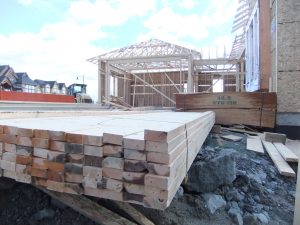 BC’s independent wood product makers say hundreds of small- and medium-sized manufacturers may be forced to shut down in light of the latest decision from the US to raise anti-dumping duties on Canadian softwood… [which] includes a requirement for Canadian companies to retroactively remit duties for products shipped to the US since Jan.1, 2023. Association chair Andy Rielly says that requirement could not only force small BC producers to shut down, but may also threaten operators’ personal assets as they may have to risk using their homes as collateral to secure bonds to pay. …Association executive director Brian Menzies describes independent wood product producers as “collateral damage” in the trade war.” …“We acquire logs and lumber at ‘arm’s length’ from various suppliers on the open market, just like claims made by members of the US Lumber Coalition, and yet our Canadian companies along with U.S. consumers must pay these unfair and costly duties.”
BC’s independent wood product makers say hundreds of small- and medium-sized manufacturers may be forced to shut down in light of the latest decision from the US to raise anti-dumping duties on Canadian softwood… [which] includes a requirement for Canadian companies to retroactively remit duties for products shipped to the US since Jan.1, 2023. Association chair Andy Rielly says that requirement could not only force small BC producers to shut down, but may also threaten operators’ personal assets as they may have to risk using their homes as collateral to secure bonds to pay. …Association executive director Brian Menzies describes independent wood product producers as “collateral damage” in the trade war.” …“We acquire logs and lumber at ‘arm’s length’ from various suppliers on the open market, just like claims made by members of the US Lumber Coalition, and yet our Canadian companies along with U.S. consumers must pay these unfair and costly duties.” BC’s forestry sector would have been brought to its knees Friday by new American duties on Canadian softwood lumber, if it wasn’t already flat on its back from being hammered by years of provincial government policies. …But even before the new duties, B.C.’s forestry sector was in a crisis. Annual harvest volumes are down by tens of millions of cubic metres, lumber production and exports have shrunk dramatically, export revenues have fallen, thousands of jobs have been lost, and dozens of mills have been curtailed or shuttered. The industry has blamed various BC NDP policies, including new old-growth logging deferrals… and extraordinarily long permitting delays. …If New Democrats are serious about saving the industry from ruin, now would seem to be the time to shelve the never-ending reviews and actually do something. The government could spin a pivot to pro-forestry policies not as a retreat, but as a made-in-BC response to American trade aggression.
BC’s forestry sector would have been brought to its knees Friday by new American duties on Canadian softwood lumber, if it wasn’t already flat on its back from being hammered by years of provincial government policies. …But even before the new duties, B.C.’s forestry sector was in a crisis. Annual harvest volumes are down by tens of millions of cubic metres, lumber production and exports have shrunk dramatically, export revenues have fallen, thousands of jobs have been lost, and dozens of mills have been curtailed or shuttered. The industry has blamed various BC NDP policies, including new old-growth logging deferrals… and extraordinarily long permitting delays. …If New Democrats are serious about saving the industry from ruin, now would seem to be the time to shelve the never-ending reviews and actually do something. The government could spin a pivot to pro-forestry policies not as a retreat, but as a made-in-BC response to American trade aggression.


 SPRINGFIELD, Illinois — The US Department of Agriculture will move thousands of employees out of the nation’s capital in a reorganization the agency says will put them closer to customers while saving money, Agriculture Secretary Brooke Rollins said Thursday. Around 2,600 workers — more than half the Washington, D.C. workforce — will be moved to five hubs stretching from North Carolina to Utah, Rollins said. The union representing federal workers immediately criticized the plan as a ploy to cut federal jobs, pointing out that some 95% of the department’s employees already work outside Washington. The move is part of President Donald Trump’s effort to make the federal government slimmer and more efficient, which received a Supreme Court boost this month. Sen. Amy Klobuchar demanded that department officials appear before the Senate to explain their thinking.” …In the Washington region, the department will vacate three buildings and examine the best use of three others.
SPRINGFIELD, Illinois — The US Department of Agriculture will move thousands of employees out of the nation’s capital in a reorganization the agency says will put them closer to customers while saving money, Agriculture Secretary Brooke Rollins said Thursday. Around 2,600 workers — more than half the Washington, D.C. workforce — will be moved to five hubs stretching from North Carolina to Utah, Rollins said. The union representing federal workers immediately criticized the plan as a ploy to cut federal jobs, pointing out that some 95% of the department’s employees already work outside Washington. The move is part of President Donald Trump’s effort to make the federal government slimmer and more efficient, which received a Supreme Court boost this month. Sen. Amy Klobuchar demanded that department officials appear before the Senate to explain their thinking.” …In the Washington region, the department will vacate three buildings and examine the best use of three others.

 SKAMANIA COUNTY, Washington — Sawmills have been closing across the Pacific Northwest over the past 30 years. There is just one left in Skamania County, down from six during its logging heyday. Limited log supply from the region’s national forests has cut off their raw material, while cheap lumber from Canada has taken market share for their finished product. Owners of the remaining mills have high hopes that President Trump will deliver relief by increasing logging in national forests and raising trade protections against Canadian exports. Although the latter can be achieved with a stroke of the president’s pen, meaningfully boosting the federal timber harvest could take years and be impeded by litigation and red tape. …US sawyers have argued successfully in trade cases that their Canadian competitors are supplied with subsidized government logs, and that they offer two-by-fours over the border for less than they sell them at home. [to access the full story a WSJ subscription is required]
SKAMANIA COUNTY, Washington — Sawmills have been closing across the Pacific Northwest over the past 30 years. There is just one left in Skamania County, down from six during its logging heyday. Limited log supply from the region’s national forests has cut off their raw material, while cheap lumber from Canada has taken market share for their finished product. Owners of the remaining mills have high hopes that President Trump will deliver relief by increasing logging in national forests and raising trade protections against Canadian exports. Although the latter can be achieved with a stroke of the president’s pen, meaningfully boosting the federal timber harvest could take years and be impeded by litigation and red tape. …US sawyers have argued successfully in trade cases that their Canadian competitors are supplied with subsidized government logs, and that they offer two-by-fours over the border for less than they sell them at home. [to access the full story a WSJ subscription is required]
 The US Lumber Coalition (USLC) has aggressively promoted strong enforcement of US trade laws and railed against “unfair Canadian trade practices.” …The USLC’s arguments have been challenged by a pair of Canadian independent consultants — Russ Taylor Global and Spar Tree Group:
The US Lumber Coalition (USLC) has aggressively promoted strong enforcement of US trade laws and railed against “unfair Canadian trade practices.” …The USLC’s arguments have been challenged by a pair of Canadian independent consultants — Russ Taylor Global and Spar Tree Group: VANCOUVER, BC
VANCOUVER, BC




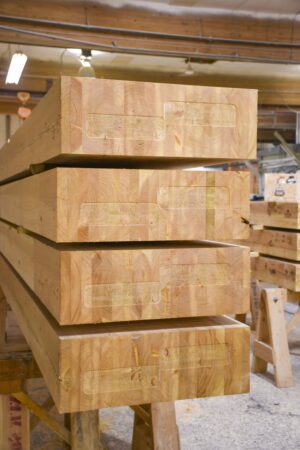 CHICAGO — …Milwaukee, our neighbor to the north has become a hotbed for the development of timber towers — tall buildings that use relatively new mass timber technologies that can replace the steel and concrete traditionally used to support such structures. Since 2022, Milwaukee has been home to the tallest timber tower in the world — the 25-story Ascent MKE at 284 feet in height. That’s no Sears Tower, but when you consider that most wood-framed buildings are one to four stories tall, it’s quite an achievement. …For all the stunning achievements that Chicago architects and engineers have accomplished over the last century and a half, there’s still a deeply conservative streak that runs through the city’s building culture. Fire, through several key historical events, is at fault. …So, perhaps it’s not surprising that we now lag many places in the development of new construction with mass timber.
CHICAGO — …Milwaukee, our neighbor to the north has become a hotbed for the development of timber towers — tall buildings that use relatively new mass timber technologies that can replace the steel and concrete traditionally used to support such structures. Since 2022, Milwaukee has been home to the tallest timber tower in the world — the 25-story Ascent MKE at 284 feet in height. That’s no Sears Tower, but when you consider that most wood-framed buildings are one to four stories tall, it’s quite an achievement. …For all the stunning achievements that Chicago architects and engineers have accomplished over the last century and a half, there’s still a deeply conservative streak that runs through the city’s building culture. Fire, through several key historical events, is at fault. …So, perhaps it’s not surprising that we now lag many places in the development of new construction with mass timber. Mass timber is an emerging construction technology growing in popularity in the United States. One obstacle to the gradual adoption of mass timber construction is the limited availability of qualified engineers and designers. Although successful efforts have been made to address research topics related to mass timber design and … adoption as a construction material, little research has been conducted to identify desired student outcomes for undergraduate civil or structural engineering students working with mass timber after graduation. This paper describes the development of an industry-guided educational resource for curriculum development to improve the alignment between undergraduate student outcomes and employer requirements related to mass timber design. …The findings reflect a prioritization of competencies related to the design of mass timber elements and structures, an understanding of material characteristics, the navigation of available design resources, contributions to project deliverables, and the support of sustainability goals.
Mass timber is an emerging construction technology growing in popularity in the United States. One obstacle to the gradual adoption of mass timber construction is the limited availability of qualified engineers and designers. Although successful efforts have been made to address research topics related to mass timber design and … adoption as a construction material, little research has been conducted to identify desired student outcomes for undergraduate civil or structural engineering students working with mass timber after graduation. This paper describes the development of an industry-guided educational resource for curriculum development to improve the alignment between undergraduate student outcomes and employer requirements related to mass timber design. …The findings reflect a prioritization of competencies related to the design of mass timber elements and structures, an understanding of material characteristics, the navigation of available design resources, contributions to project deliverables, and the support of sustainability goals.  Forming an unusual alliance, environmental and animal welfare groups have pulled together a bipartisan effort in Congress, united by universal disdain for a Biden-era plan to massacre nearly 500,000 barred owls. Killing off barred owls in an effort to save endangered spotted owls is “wasteful, inhumane and unworkable,” Wayne Pacelle, president of Animal Wellness Action and the Center for a Humane Economy said. Those groups hailed the introduction Wednesday of the Congressional Review Act (CRA) to nullify the Biden-era barred owl management strategy. …In September 2024, the Biden administration approved a $1.3 billion plan for U.S. Fish and Wildlife Service (FWS) agents to shoot about 470,000 barred owls over the next 30 years in Washington, Oregon and California. The justification was to give spotted owls a better chance of recovery under the assumption that barred owls bully their smaller cousins out of vital, old-growth forest habitat. …Federal wildlife agents have killed roughly 4,500 barred owls since 2009.
Forming an unusual alliance, environmental and animal welfare groups have pulled together a bipartisan effort in Congress, united by universal disdain for a Biden-era plan to massacre nearly 500,000 barred owls. Killing off barred owls in an effort to save endangered spotted owls is “wasteful, inhumane and unworkable,” Wayne Pacelle, president of Animal Wellness Action and the Center for a Humane Economy said. Those groups hailed the introduction Wednesday of the Congressional Review Act (CRA) to nullify the Biden-era barred owl management strategy. …In September 2024, the Biden administration approved a $1.3 billion plan for U.S. Fish and Wildlife Service (FWS) agents to shoot about 470,000 barred owls over the next 30 years in Washington, Oregon and California. The justification was to give spotted owls a better chance of recovery under the assumption that barred owls bully their smaller cousins out of vital, old-growth forest habitat. …Federal wildlife agents have killed roughly 4,500 barred owls since 2009. 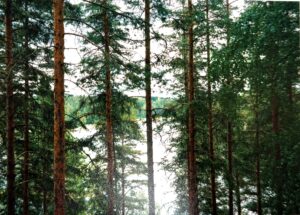 America’s public forests are under assault. We have already seen the massive timber harvests called for by President Trump’s executive order, the elimination of the Roadless Rule, and the gutting of wildlife protection efforts. Those are the broad stokes, but there are also finer maneuvers underway, such as abandoning the traditional practice whereby forest personnel paint-mark the trees selected for cutting, handing those decisions over instead to the timber companies themselves. Or the various subsections that keep popping up in the “Big Beautiful Bill” — for example, giving timber companies an option to pay for hastened environmental review and defunding endangered species recovery efforts. It also arbitrarily requires the Forest Service to increase harvests by 250 million acres annually for nine years. This is the context within which we must now view the Fix Our Forests Act, a logging-in-the-name-of-fire-prevention bill, stuffed with provisions that significantly override scientific and citizen review.
America’s public forests are under assault. We have already seen the massive timber harvests called for by President Trump’s executive order, the elimination of the Roadless Rule, and the gutting of wildlife protection efforts. Those are the broad stokes, but there are also finer maneuvers underway, such as abandoning the traditional practice whereby forest personnel paint-mark the trees selected for cutting, handing those decisions over instead to the timber companies themselves. Or the various subsections that keep popping up in the “Big Beautiful Bill” — for example, giving timber companies an option to pay for hastened environmental review and defunding endangered species recovery efforts. It also arbitrarily requires the Forest Service to increase harvests by 250 million acres annually for nine years. This is the context within which we must now view the Fix Our Forests Act, a logging-in-the-name-of-fire-prevention bill, stuffed with provisions that significantly override scientific and citizen review.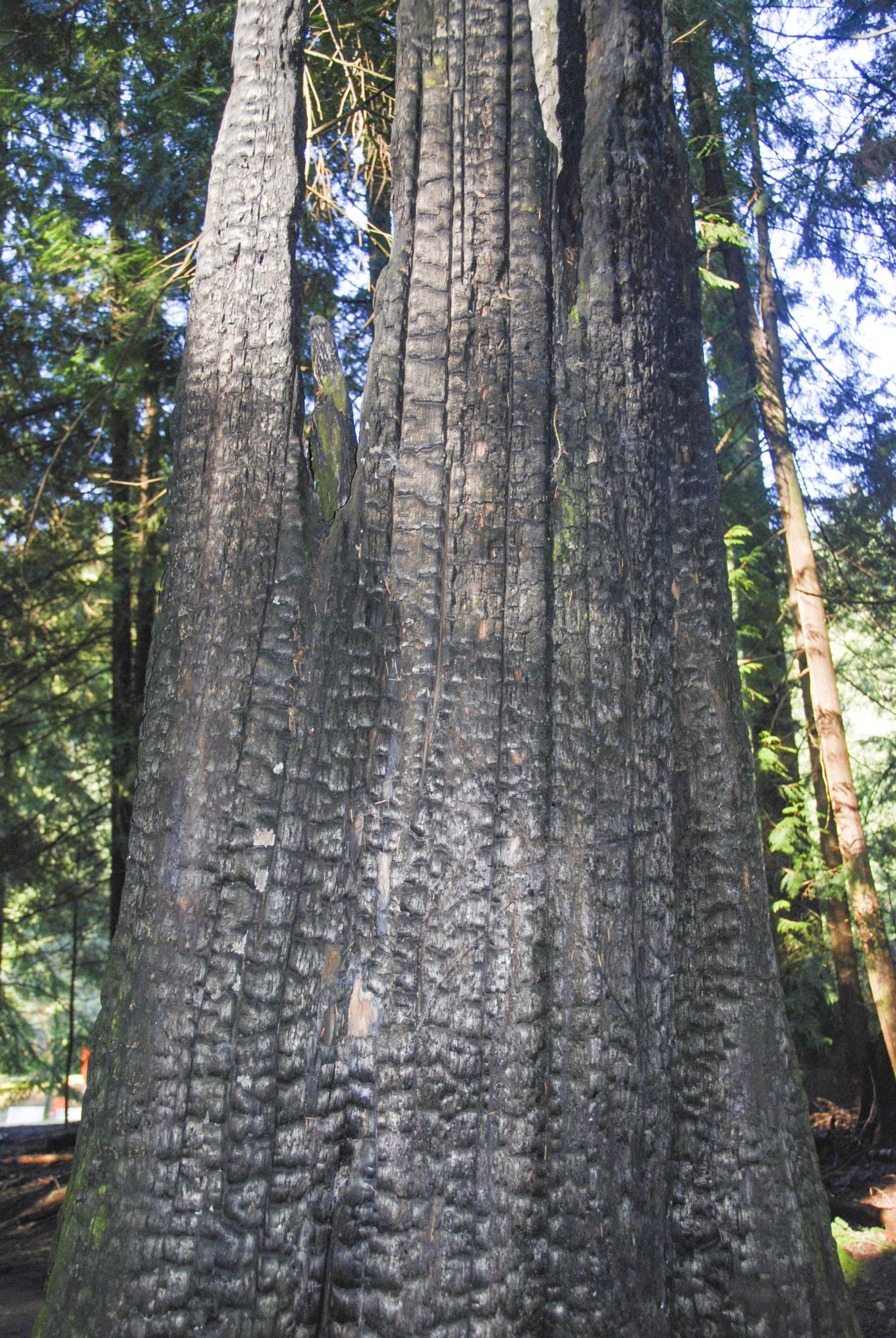 If state funding for forest health and wildfire prevention isn’t ramped back up in the next legislative session, it could hinder efforts to prevent severe fires in the coming years, Washington’s top public lands official and others warned this week. The state Legislature approved House Bill 1168 in 2021, which committed $500 million over eight years to the state Department of Natural Resources for wildfire preparedness and response. State spending had largely kept up with that target until this year, with the department receiving $115 million in the last two-year budget and $130 million in the one before that. Then this year, as lawmakers confronted a budget shortfall, they slashed the wildfire preparedness funding to just $60 million for the next two years. The Department of Natural Resources says it’s prepared for this fire season and has money left over from past years. But the funding rollback has sparked concerns.
If state funding for forest health and wildfire prevention isn’t ramped back up in the next legislative session, it could hinder efforts to prevent severe fires in the coming years, Washington’s top public lands official and others warned this week. The state Legislature approved House Bill 1168 in 2021, which committed $500 million over eight years to the state Department of Natural Resources for wildfire preparedness and response. State spending had largely kept up with that target until this year, with the department receiving $115 million in the last two-year budget and $130 million in the one before that. Then this year, as lawmakers confronted a budget shortfall, they slashed the wildfire preparedness funding to just $60 million for the next two years. The Department of Natural Resources says it’s prepared for this fire season and has money left over from past years. But the funding rollback has sparked concerns. The state’s top public lands official is urging lawmakers to restore the spending to previous levels after they cut it by about half this year. If state funding for forest health and wildfire prevention isn’t ramped back up in the next legislative session, it could hinder efforts to prevent severe fires in the coming years, Washington’s top public lands official and others warned this week. The state Legislature approved House Bill 1168 in 2021, which committed $500 million over eight years to the state Department of Natural Resources for wildfire preparedness and response. State spending had largely kept up with that target until this year, with the department receiving $115 million in the last two-year budget and $130 million in the one before that. Then this year, as lawmakers confronted a budget shortfall, they slashed the wildfire preparedness funding to just $60 million for the next two years.
The state’s top public lands official is urging lawmakers to restore the spending to previous levels after they cut it by about half this year. If state funding for forest health and wildfire prevention isn’t ramped back up in the next legislative session, it could hinder efforts to prevent severe fires in the coming years, Washington’s top public lands official and others warned this week. The state Legislature approved House Bill 1168 in 2021, which committed $500 million over eight years to the state Department of Natural Resources for wildfire preparedness and response. State spending had largely kept up with that target until this year, with the department receiving $115 million in the last two-year budget and $130 million in the one before that. Then this year, as lawmakers confronted a budget shortfall, they slashed the wildfire preparedness funding to just $60 million for the next two years. 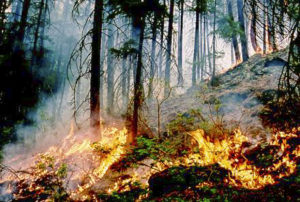 REDDING, California — In firefighting, drones get used to see hot spots in the dark, map the size of fires and look for damage. But the recent Green Fire also proves the flying robots also are effective in starting backfires on terrain firefighters cannot safely get to in the Shasta-Trinity National Forest. “If the mission is dull, dumb or dangerous, send the drone,” said John Schuler, a firefighter and US Forest Service spokesperson on the Green Fire. Drones can go where no firefighter can: Into remote areas that are difficult to impossible for crews to reach, and where manned aircraft have trouble flying due to smoke or other safety concerns. Firefighters like those on the Green Fire in the Shasta-Trinity National Forest are using drones to check fire size and directions wildfires are moving. They do the latter by dropping ping pong balls full of chemicals, said Schuler.
REDDING, California — In firefighting, drones get used to see hot spots in the dark, map the size of fires and look for damage. But the recent Green Fire also proves the flying robots also are effective in starting backfires on terrain firefighters cannot safely get to in the Shasta-Trinity National Forest. “If the mission is dull, dumb or dangerous, send the drone,” said John Schuler, a firefighter and US Forest Service spokesperson on the Green Fire. Drones can go where no firefighter can: Into remote areas that are difficult to impossible for crews to reach, and where manned aircraft have trouble flying due to smoke or other safety concerns. Firefighters like those on the Green Fire in the Shasta-Trinity National Forest are using drones to check fire size and directions wildfires are moving. They do the latter by dropping ping pong balls full of chemicals, said Schuler.
 The restoration of gray wolves in Yellowstone National Park has helped revive an aspen tree population unique to the region, a new study has found. Quaking aspen, one of the few deciduous tree species in the northern Rocky Mountain ecosystem, is once again thriving, after suffering severe decline during the 20th century, according to a new study. “This is a remarkable case of ecological restoration,” lead author, Luke Painter, at Oregon State University’s College of Agricultural Sciences, said. The decline in aspen growth occurred in tandem with a surge in Rocky Mountain elk, which had lost a key predator following the elimination of wolves from the region by 1930. …At the same time… aspen recovery hasn’t been uniform across northern Yellowstone — and the growth is subject to numerous potential threats including climate change and encroachment of coniferous trees, are possible such factors. And other herbivores have increased in the region.
The restoration of gray wolves in Yellowstone National Park has helped revive an aspen tree population unique to the region, a new study has found. Quaking aspen, one of the few deciduous tree species in the northern Rocky Mountain ecosystem, is once again thriving, after suffering severe decline during the 20th century, according to a new study. “This is a remarkable case of ecological restoration,” lead author, Luke Painter, at Oregon State University’s College of Agricultural Sciences, said. The decline in aspen growth occurred in tandem with a surge in Rocky Mountain elk, which had lost a key predator following the elimination of wolves from the region by 1930. …At the same time… aspen recovery hasn’t been uniform across northern Yellowstone — and the growth is subject to numerous potential threats including climate change and encroachment of coniferous trees, are possible such factors. And other herbivores have increased in the region.
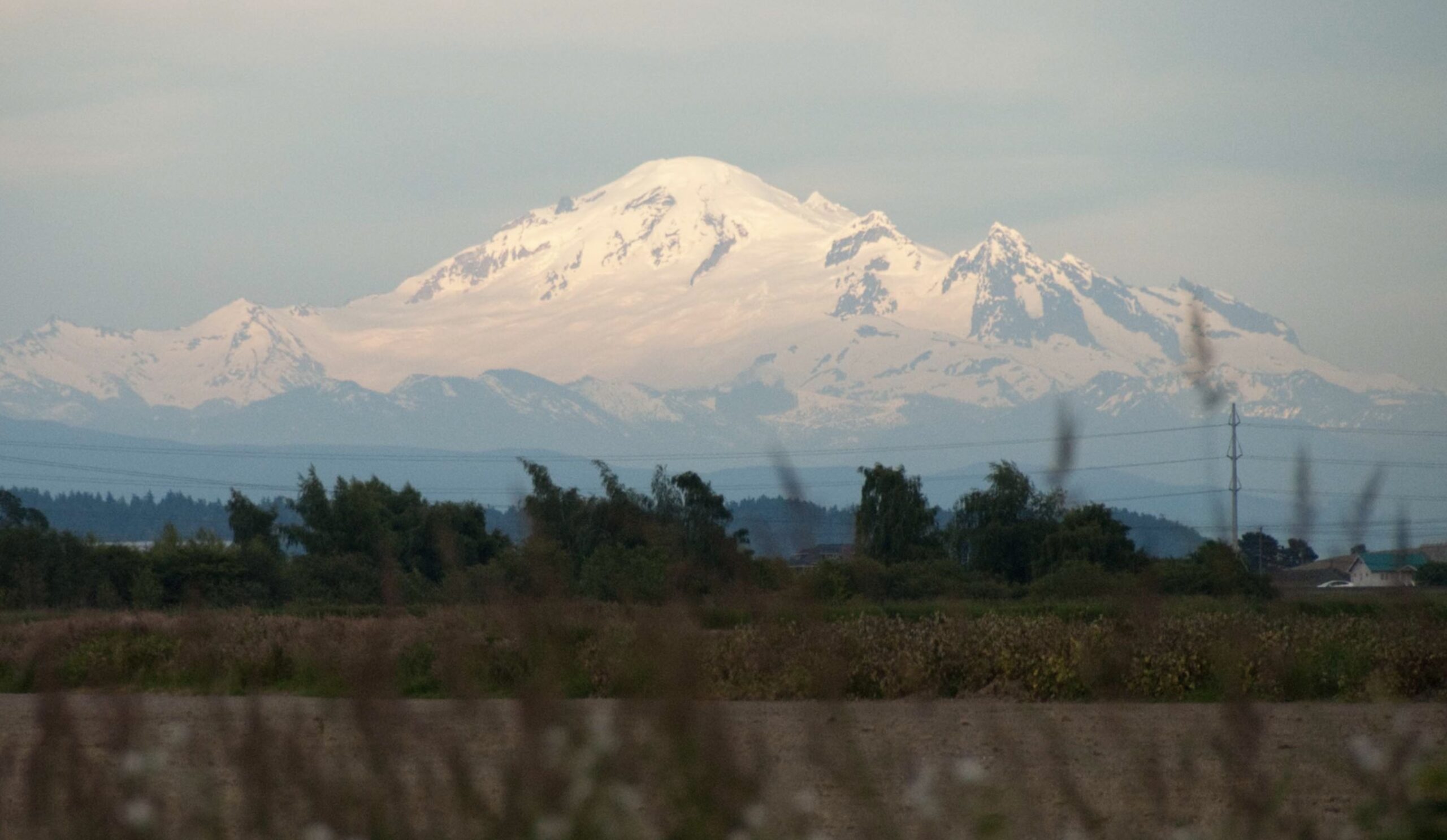 The state of Washington will get about $20 million for wildfire fighting efforts after a months-long delay, a Washington congresswoman confirmed Thursday. The Trump administration distributed $280 million in federal funding to forestry agencies across the country, according to the office of U.S. Sen. Maria Cantwell, D-Washington. The money will help fund the Washington State Department of Natural Resources’ efforts to train and equip wildland firefighters across the state. “The state of Washington is in the middle of an active and dangerous wildfire season,” Cantwell said in a news release. “After questioning the Chief of the Forest Service and the Secretary of Agriculture, I am pleased that Washington — and all states — are finally receiving the funding they need to prepare for and respond to wildfires this summer and in the future.”
The state of Washington will get about $20 million for wildfire fighting efforts after a months-long delay, a Washington congresswoman confirmed Thursday. The Trump administration distributed $280 million in federal funding to forestry agencies across the country, according to the office of U.S. Sen. Maria Cantwell, D-Washington. The money will help fund the Washington State Department of Natural Resources’ efforts to train and equip wildland firefighters across the state. “The state of Washington is in the middle of an active and dangerous wildfire season,” Cantwell said in a news release. “After questioning the Chief of the Forest Service and the Secretary of Agriculture, I am pleased that Washington — and all states — are finally receiving the funding they need to prepare for and respond to wildfires this summer and in the future.”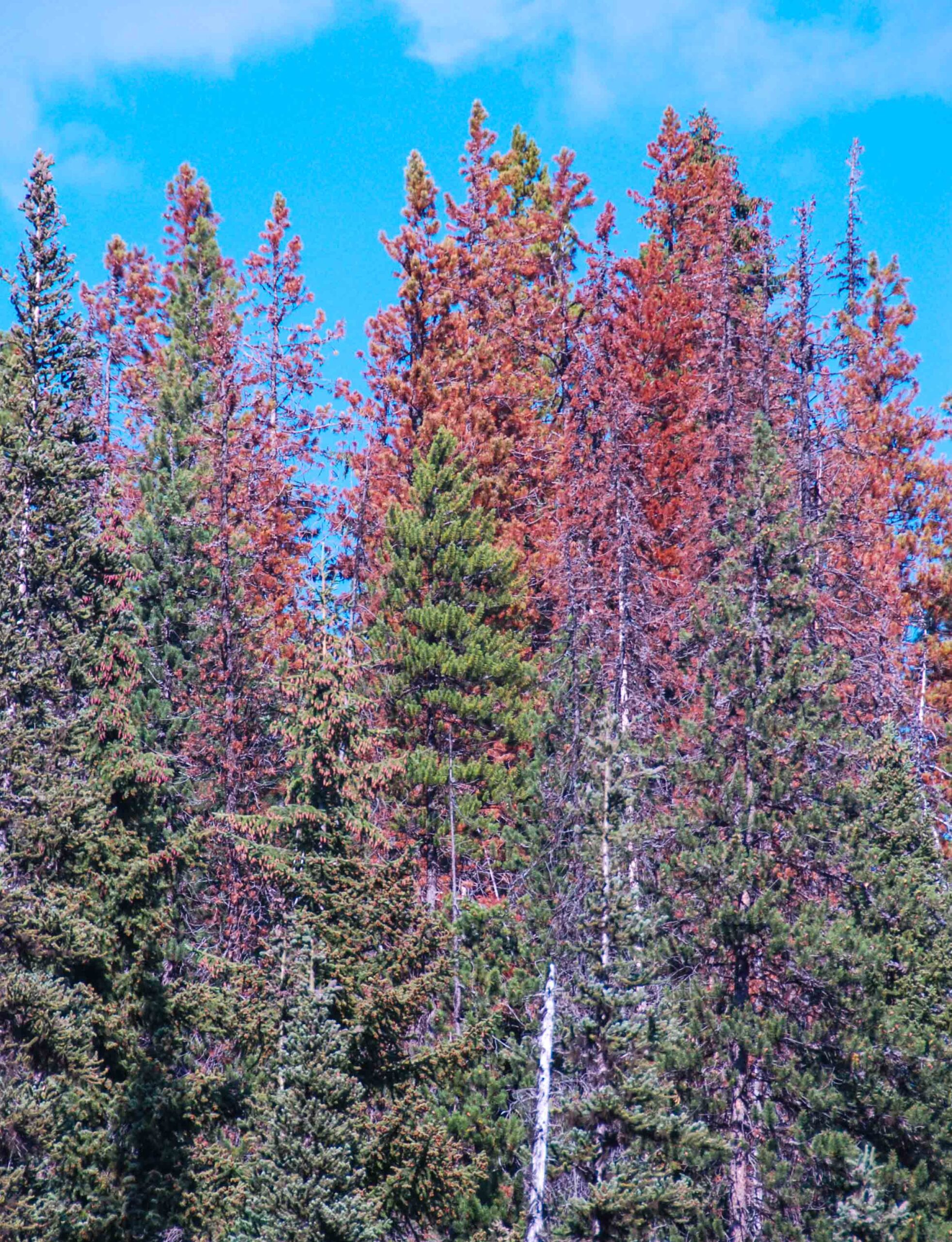 Crested Butte Mountain Resort (CBMR) in central Colorado has been dealing with a mountain pine beetle infestation for the last two years, but the Gunnison County resort is fighting back using small packets of pheromones stapled to trees. Beetles were first detected mountainside at CBMR in 2023… During the 2024 season, ground crews revisited large areas of lodgepole pine within and around CBMR’s boundaries, confirming limited but recent beetle activity among the trees. …But now CBMR Mountain Operations, alongside rangers with the U.S. Forest Service, are fighting the beetles back with the help of verbenone pheromone packets. Verbenone is an anti-aggregation pheromone produced by mountain pine beetles to indicate a tree has reached maximum capacity, letting other beetles know there are no resources available to consume within the tree.
Crested Butte Mountain Resort (CBMR) in central Colorado has been dealing with a mountain pine beetle infestation for the last two years, but the Gunnison County resort is fighting back using small packets of pheromones stapled to trees. Beetles were first detected mountainside at CBMR in 2023… During the 2024 season, ground crews revisited large areas of lodgepole pine within and around CBMR’s boundaries, confirming limited but recent beetle activity among the trees. …But now CBMR Mountain Operations, alongside rangers with the U.S. Forest Service, are fighting the beetles back with the help of verbenone pheromone packets. Verbenone is an anti-aggregation pheromone produced by mountain pine beetles to indicate a tree has reached maximum capacity, letting other beetles know there are no resources available to consume within the tree. The Salt River Project has extended its partnership with the state to thin watersheds, which will also improve fire protection for communities in Rim Country and the White Mountains. In the past five years, The Valley utility has worked with the Arizona Department of Forestry and Fire Management to thin 35,000 acres of overgrown forest, including a portion of the watershed of the C.C. Cragin Reservoir. SRP has also signed long-term contracts to buy electricity from NovoBiopower, the state’s only biomass burning power plant. The Snowflake power plant remains crucial to forest restoration efforts by providing one of the few markets for the tons of low-value biomass removed on each acre treated. SRP issued a release this week stating it hopes to fund the treatment of another 52,000 acres in the next five years. SRP also helped thin overgrown forests outside Payson, adding to a buffer zone protecting the community from wildfires.
The Salt River Project has extended its partnership with the state to thin watersheds, which will also improve fire protection for communities in Rim Country and the White Mountains. In the past five years, The Valley utility has worked with the Arizona Department of Forestry and Fire Management to thin 35,000 acres of overgrown forest, including a portion of the watershed of the C.C. Cragin Reservoir. SRP has also signed long-term contracts to buy electricity from NovoBiopower, the state’s only biomass burning power plant. The Snowflake power plant remains crucial to forest restoration efforts by providing one of the few markets for the tons of low-value biomass removed on each acre treated. SRP issued a release this week stating it hopes to fund the treatment of another 52,000 acres in the next five years. SRP also helped thin overgrown forests outside Payson, adding to a buffer zone protecting the community from wildfires.
 100 MILE HOUSE, BC — West Fraser Mills (WFM) had just cause to fire a worker who violated a safety policy on May 13, 2024, and tried to minimize the risk involved,
100 MILE HOUSE, BC — West Fraser Mills (WFM) had just cause to fire a worker who violated a safety policy on May 13, 2024, and tried to minimize the risk involved,